The Real Aspen, by Aspenites: The History of Aspen Sojourner Magazine
We should probably start with the name. The “Sojourner” portion, anyway. When Ernie Ashley—a local publishing legend who by the early 1980s had already founded Aspen Magazine and seven other regional magazines—decided to launch a hardcover hotel book in the Aspen market in 1995, she wanted a name with panache. “‘Sojourner’ means ‘traveler,’ so it made sense for the hotel guests,” she explains today. “But even the locals here are on a journey. Everyone looks at their time in Aspen as pivotal.” Despite the malapropisms it has inspired over the years (“snowjourner” and “sojournal” are the most common), the name stuck. And so did the magazine, evolving from its hardcover, hotel-room-only beginnings to a quarterly soft-cover with national newsstand distribution and subscribers in forty-nine states. (C’mon, Alaska. Seriously.) In those twenty years of existence, Sojourner, and then, as of the Summer 2001 edition, Aspen Sojourner, has maintained a mission that’s been remarkably consistent: share the story of Aspen in the most inspiring way possible.
THE PEOPLE
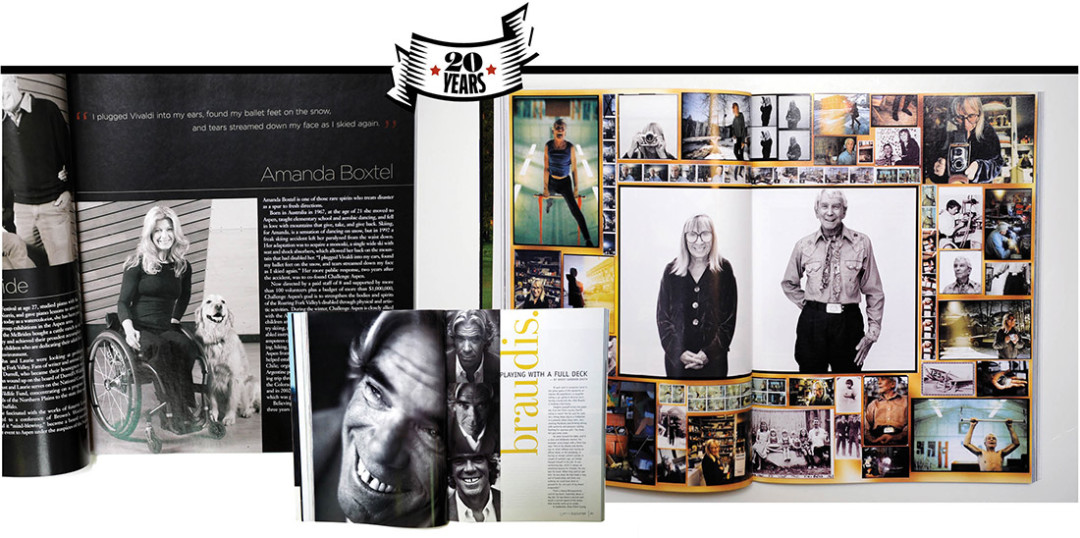
Image: Courtesy: SagaCity Media
The Heart of the Community
The topic to appear most regularly in the magazine over its twenty years? By far, it’s been people—not one of the sixty-one editions we’ve produced has been without a profile of someone. Much more than on high-society types, the focus has been on locals. Of course, plenty of Aspen’s residents have achieved elevated status—think Klaus Obermeyer, Bob Braudis, and Gretchen Bleiler, all of whom have appeared in multiple issues—but more often we’ve written about the Sue Smedstads, Amanda Boxtels, and John McBrides, those exceptional regular folks Aspen seems to produce in abundance.
HISTORY

Image: Courtesy: SagaCity Media
Living in the Past
“The Aspen of today is very different from the remote, sparsely populated, struggling mountain town that Elizabeth Paepcke ‘discovered’ and fell in love with in 1939….” Those words, written in Volume 1, Issue 1 of Sojourner by Helen Klanderud in 1995, speak to Aspen’s adoration of its cultural patron saints, but also to town’s—and this magazine’s—ongoing dedication to checking in with the past. As expected, the Paepckes and the Goethe Bicentennial have made numerous appearances, but so have the infamous Hippie Trials, the brief but wild mining era, and the birth and evolution of our ski culture.
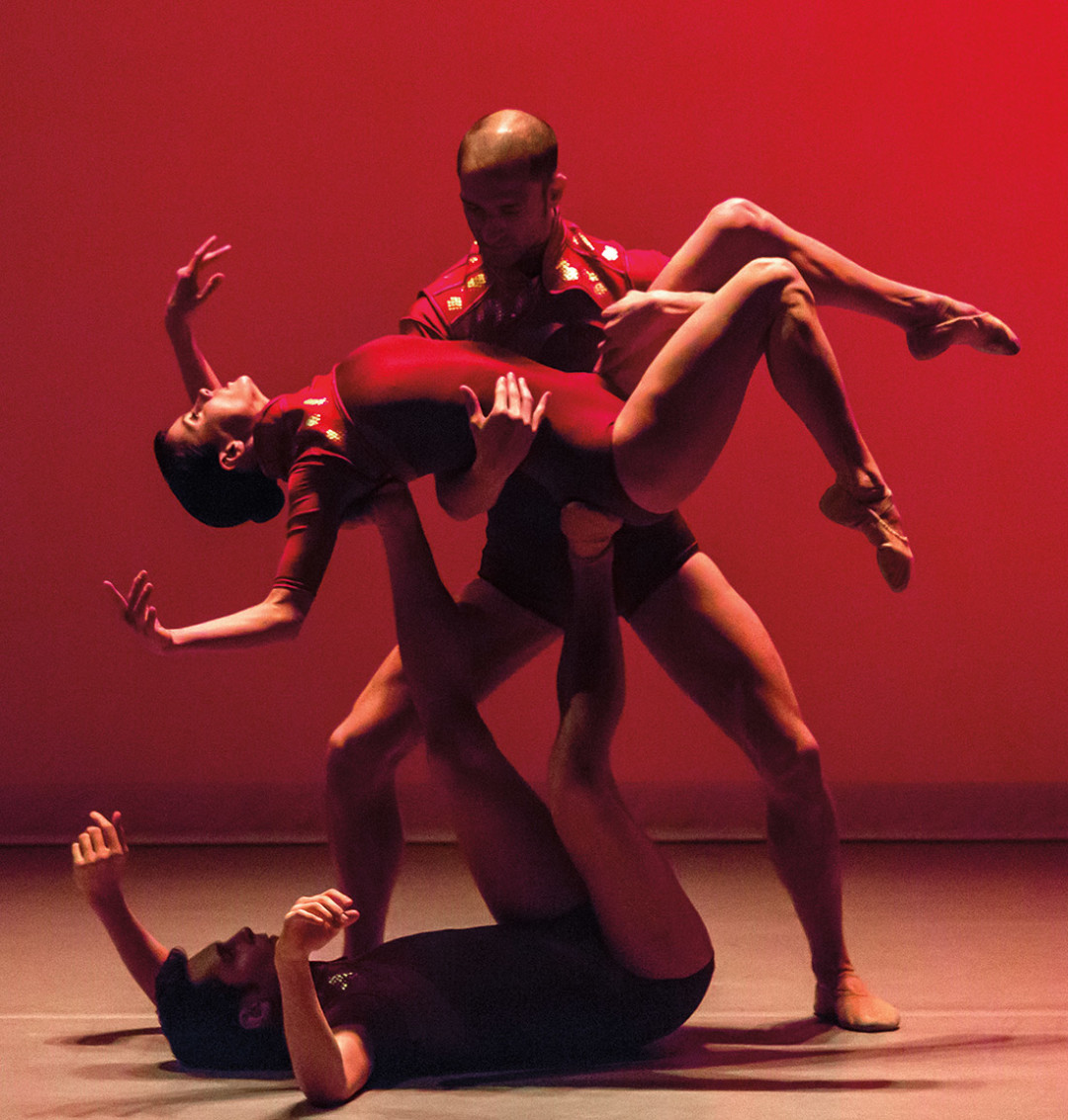
Image: Sharen Bradford
ASPEN CULTURE
A Ski Town, Refined
Jazz Aspen Snowmass, Theatre Aspen, Aspen Words, Anderson Ranch—the list goes on and on. Articles about classical music dominated the early issues of Sojourner, including a twenty-seven-page feature on the Aspen Music Festival and School’s fiftieth anniversary in Summer/Fall 1999.
In Winter/Spring 2002, Aspen Santa Fe Ballet, then five years into its existence, received a feature-length profile. The magazine wasn’t alone in being slow on the uptake. As ASFB executive director Jean-Philippe Malaty said, “At first … there was nothing: no one in the dance world watched us. Now they are watching us, and it is shocking in five years what they missed.”
Quick quiz: who said the following? “I didn’t want to leave my present job to come to a museum that aspired to be known only regionally.” Be honest—you guessed Heidi Zuckerman, the current director of the Aspen Art Museum. Actually, it was then-director Dean Sobel in the Winter/Spring 2001 issue. The AAM’s aspirations have always been a point of local scrutiny, though its and the rest of the valley’s embarrassment of arts programming is one of our greatest points of pride.
ART & DINING

Image: Courtesy: SagaCity Media
Cover Act
THE COVERS
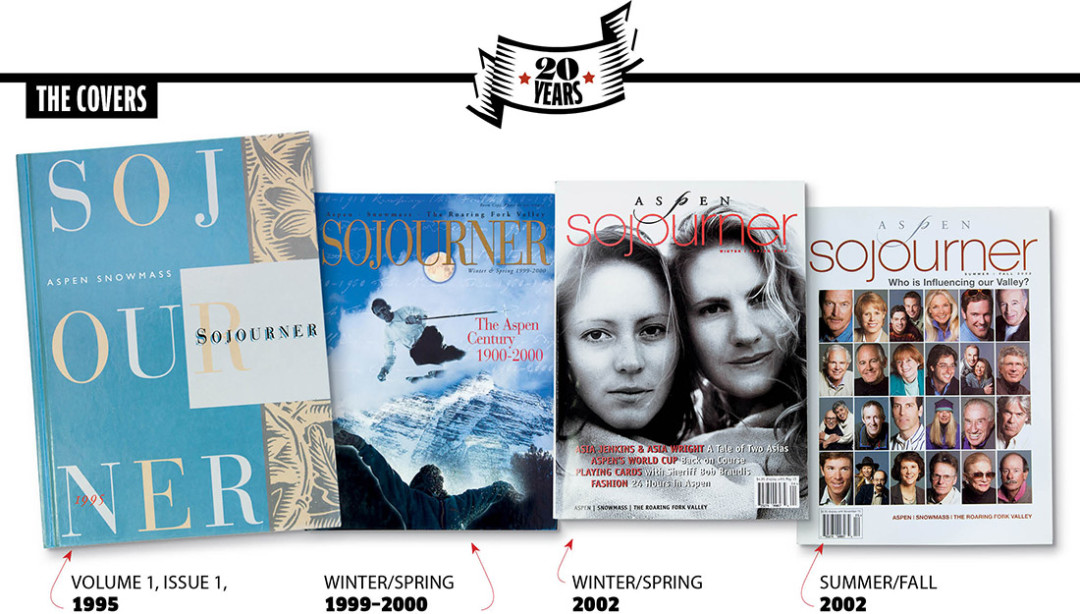
Image: Courtesy: SagaCity Media
Volume 1, Issue 1, 1995
The elegance of the type-driven cover carried through to the interior pages. Bruce Berger’s beautiful prose assured readers that the Aspen Idea of Mind, Body, Spirit was alive and well; “Sojourner Salutes” honored local do-gooders; and New Yorker–style cartoons brought even more gentility.
Winter/Spring 1999–2000
Cynthia Brown created the photomontage of the Maroon Bells, Friedl Pfeifer, and a girl throwing snow. Inside, Jay Cowan chronicled town’s arrival at the millennium, dropping the “billionaires pushing out the millionaires” line in a story whose closing image was a man roller-blading while talking on a cell phone.
Winter/Spring 2002
Now a soft-cover with a new logo, the magazine for only its second time featured a portrait on its cover. Asia Wright and Asia Jenkins were locals who both lost their fathers to mountain tragedies. The photographer, Karl Wolfgang, also created images of Sheriff Bob Braudis for the issue that remain iconic to this day.
Summer/Fall 2002
It was rock ’n’ roll photographer Lynn Goldsmith who proposed a Life magazine–style spread of the most influential people in the Roaring Fork Valley. Twenty-four portraits make up the cover; thirty-one more accompany the story. A remarkable number of the subjects remain influential today.
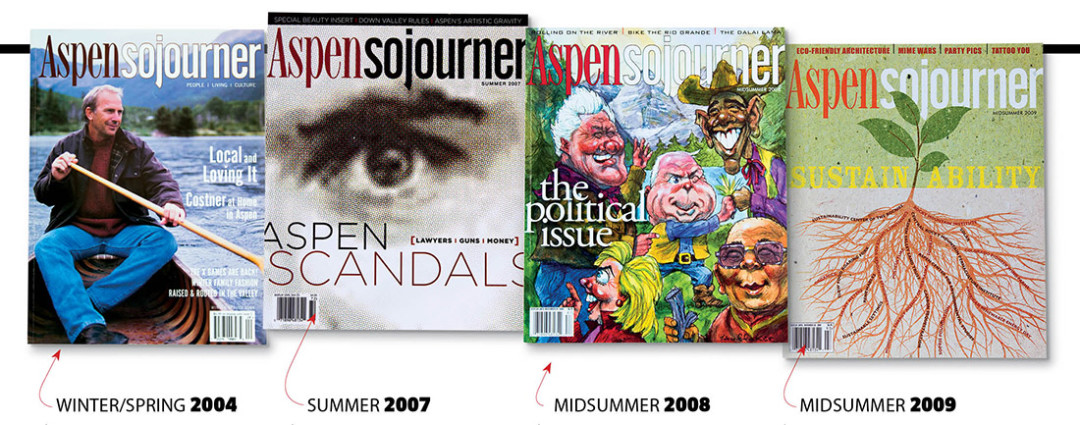
Image: Courtesy: SagaCity Media
Winter/Spring 2004
Putting a Hollywood celebrity on the cover was a tactic the magazine, now sporting its third logo, intentionally avoided. Kevin Costner had been coming to Aspen for about a decade and was deemed to move through life here in an acceptably “uncelebrity” way. So on the cover he went.
Summer 2007
The close-up, pixelated image of serial killer Ted Bundy’s eye teased the magazine’s most buzzed-about story in years: Jay Cowan’s retelling of Aspen’s most scandalous tales, including Bundy’s escape from the Pitkin County Courthouse and Claudine Longet’s shooting of Spider Sabich.
Midsummer 2008
With a presidential election looming and several stories relating to politics planned for the issue (as well as a profile of the Dalai Lama, who would visit Aspen that July), we called on award-winning illustrator Sandy Huffaker, whose political cartoons were syndicated in nearly 1,000 newspapers.
Midsummer 2009
Kissane/Viola Design created an optical illusion for an issue devoted to local environmental efforts: the pulpy look of the cover was the work of the designers, not of the paper stock. They brought metaphor, too, with the plant’s roots made up of the names of local eco-businesses.
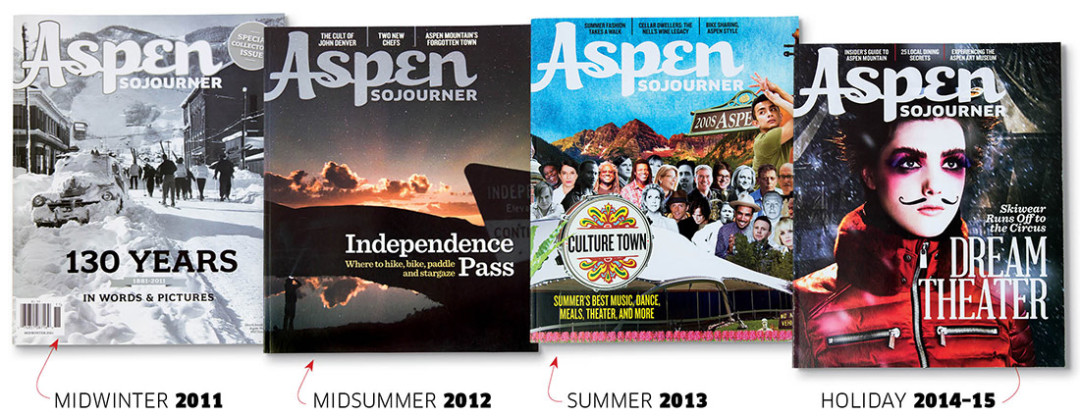
Image: Courtesy: SagaCity Media
Midwinter 2011
Aspen’s 130th birthday snuck past most everyone else in town, but we celebrated it. Readers cheered, and we have produced a Midwinter history issue every year since. The cover image is of skiers heading toward Aspen Mountain on Mill Street in 1952. The fourth Aspen Sojourner logo had debuted a year earlier.
Midsummer 2012
This shot from the top of Independence Pass, taken at 3 a.m. during a “moonset” by Daniel Bayer, may seem dangerously dark for a cover. But in this case, it worked very well. Our best-selling cover ever, it sold almost 50 percent of the copies we placed on newsstands, nearly twice the national average.
Summer 2013
We’ve produced a guide to summer arts and culture since 2011, and the cover always proves a challenge. How to capture classical music and ballet and theater in a single visual idea? Our answer has been illustration, like this homage to Sgt. Pepper’s,
featuring the faces of 2013’s artists and performers.
Holiday 2014–15
Despite running fashion pages worthy of a big-time fashion magazine for years, we’d never put one of the photos on the cover. This shoot—a trippy mash-up of skiwear and a circus theme, brilliantly executed by Shelly Safir Marolt and Bernhard Donaubauer—was the perfect one to start with.
THE PARTIES

Image: Nancy Meyer
ABOUT FACE
Socializing has been a pillar of the Aspen experience since day one. The miners did it; so did the hardy souls struggling through the Quiet Years. Party pictures showed up in the Winter 1996 edition of Sojourner and have been a fixture in the magazine ever since. That fixture’s fixer? Our publisher, Nancy Mayer, who has snapped so many shots—literally many thousands of them—at gallery openings, nonprofit galas, and community events that she’s worn out four cameras in ten years.
CELEBRITY
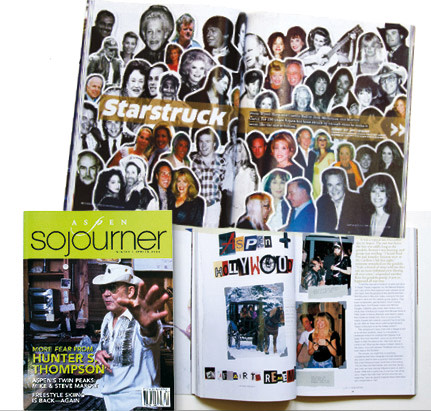
Image: Courtesy: SagaCity Media
The Fame Game
Only in the past decade have Aspenites—and it’s a certain type of Aspenite— developed an affection for celebrity culture. The modus operandi of a true local has long been practiced indifference, meaning that you still mentioned seeing Jennifer Aniston and Brad Pitt at the Caribou Club, you just did so in a blasé way. This magazine carries the torch for that fading ethos. We’ve profiled Felicity Huffman, who grew up here, John Oates, who really does qualify as a Woody Creature, and a few others, but for us it’s not about how famous you are: it’s about how Aspen you are.
SPORTS
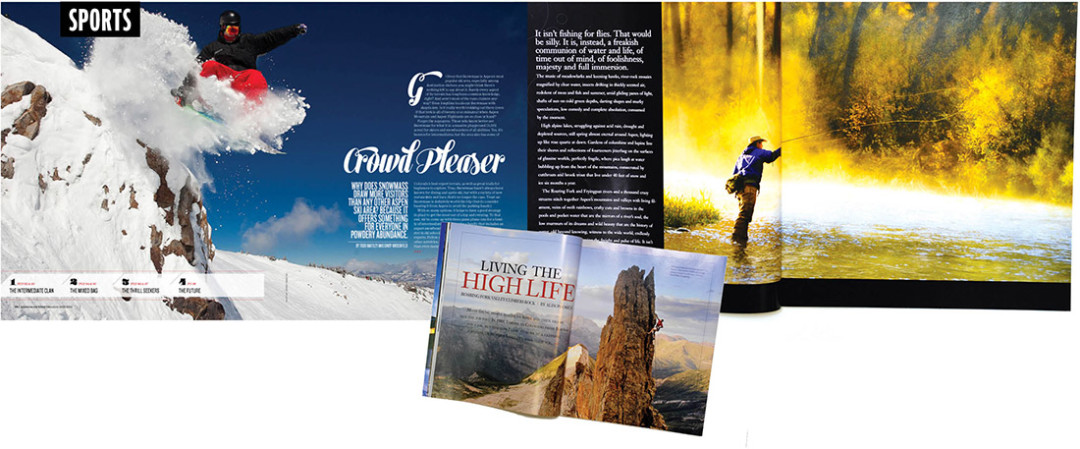
Image: Courtesy: SagaCity Media
Our Great Outdoors
With a backyard like Aspen’s, publishing stories that rhapsodize all the ways to play in the mountains is a no-brainer. Sometimes they’re driven by trends, like the return of freestyle skiing (“New Dogs, Old Tricks,” Winter/Spring 2003). Sometimes they hang on news items, like the addition of the Deep Temerity lift at Aspen Highlands (“Beyond Words,” Holiday 2005–2006). But most often they are an attempt by our skiing, biking, hiking, fly-fishing, climbing, and stand-up-paddleboarding scribes to capture the essence of dancing with gravity or reading a river. Really big photos help with that, too.
FASHION
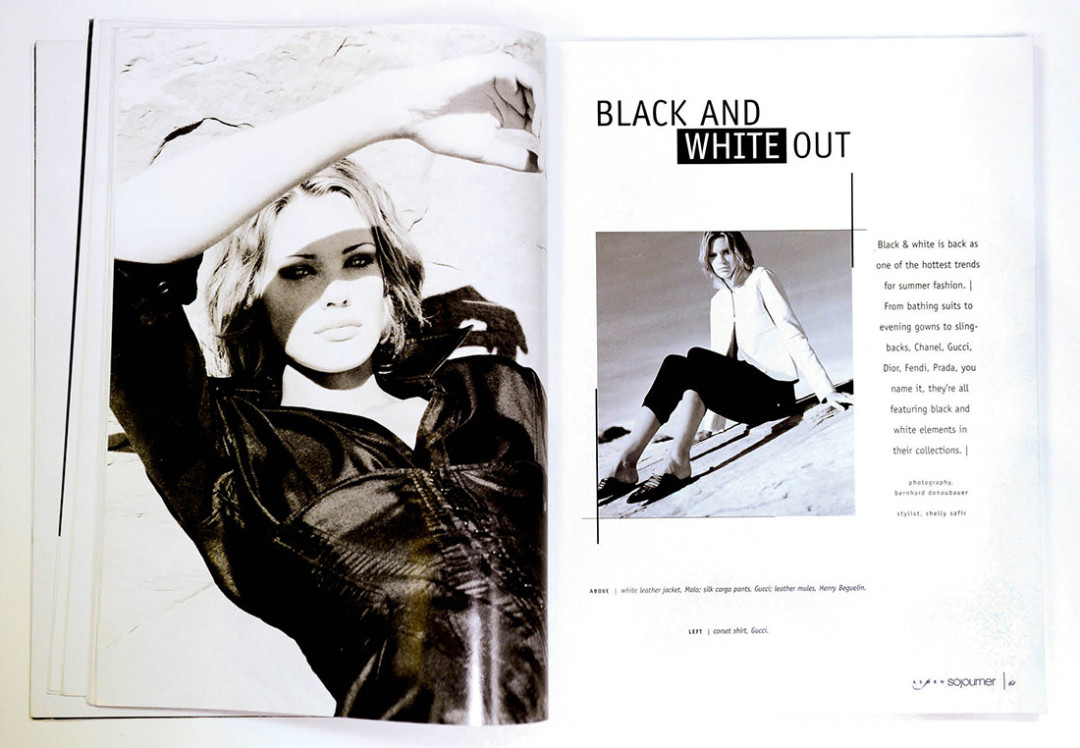
Style Points
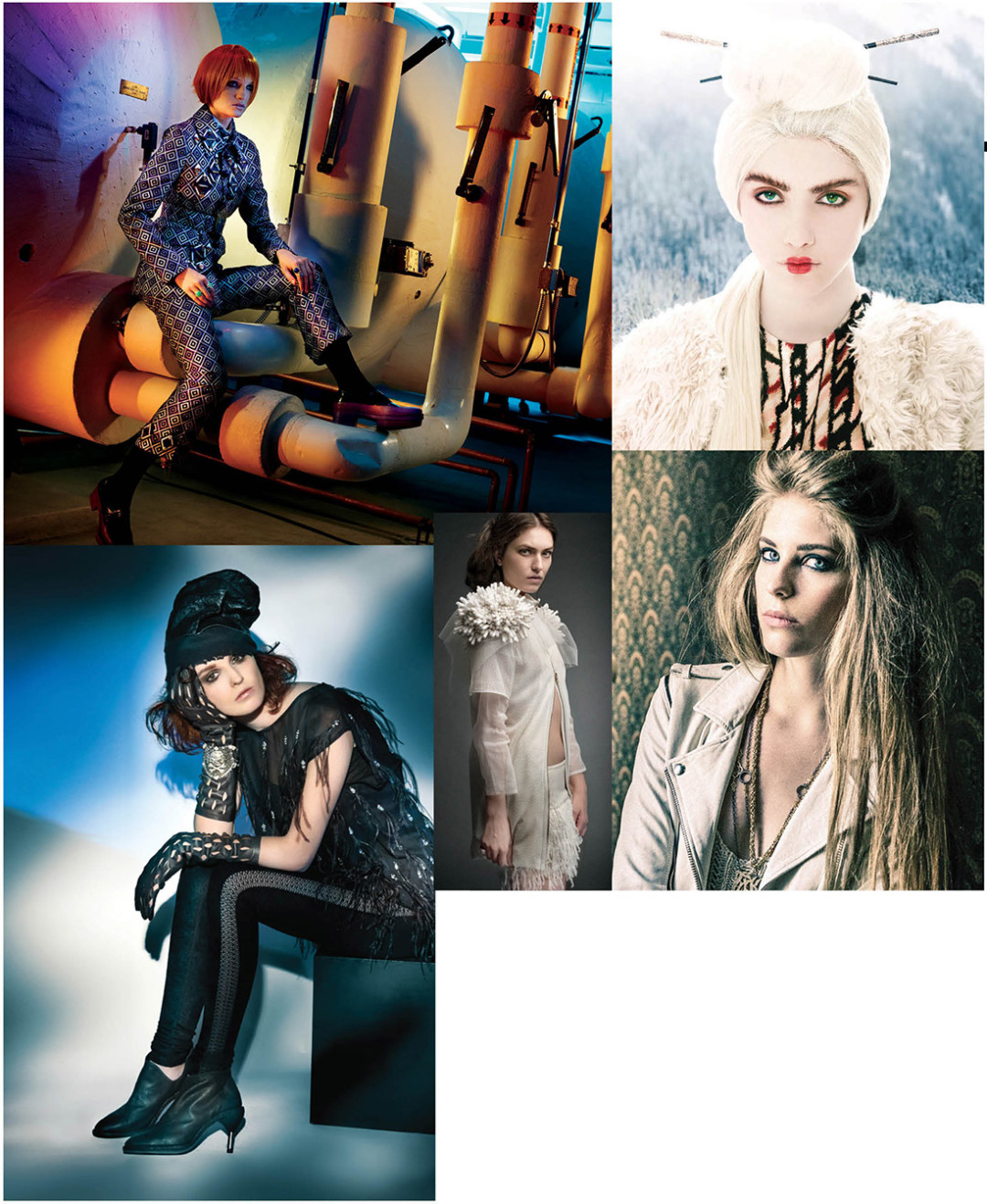
Gucci and Chanel ads appear in the first Sojourner. We didn’t bring fashion to Aspen, but we sure have enjoyed playing with it. In the early days, our shoots looked like the pages from a catalog. In the past ten years, they’ve taken on a much more artistic expression, with our photographer and stylist team aiming for atmosphere and point of view.
HUMOR
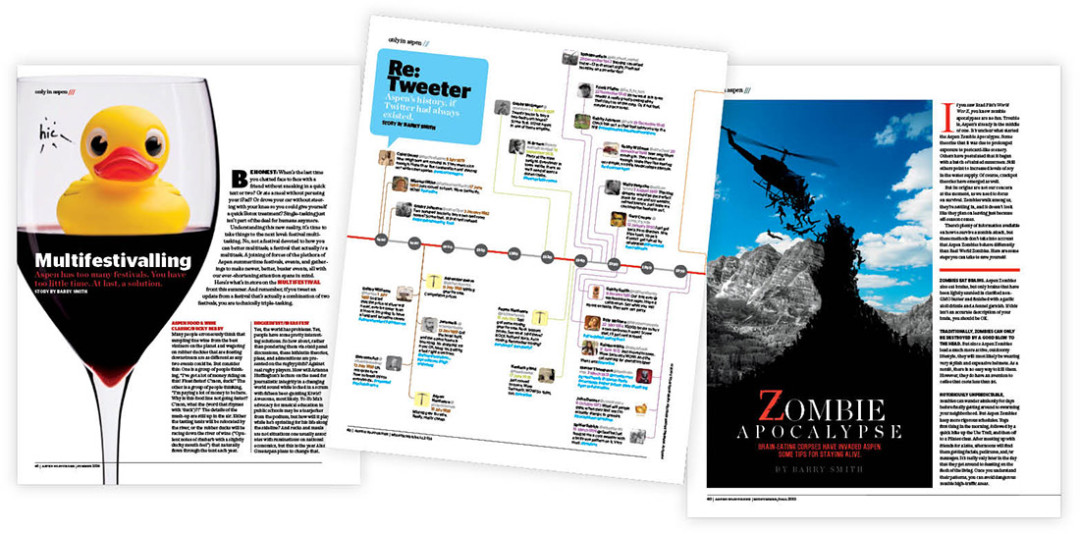
Image: Courtesy: SagaCity Media
Laugh Tracks
You can only praise Aspen so much before you owe it to yourself—and to town—to poke a little fun. That task fell most often to the brilliance of Barry Smith, who used zombie apocalypses, tweets from Ted Bundy (@cerealklr999), and phone apps for finding lost trophy wives to remind us not to take things too seriously.
QUOTES
We Said It
On the occasion of our twentieth anniversary, an assortment of words from our past.
"Despite the disconnect between the glitz of Aspen and the shabbiness of its mayor, [Mick] Ireland believes he represents something close to the heart of town. “I’m not at all glamorous,” he says. “But people are surprised that the town itself is not as glamorous as the media would have it. They come in to write about the number of jets, the Charlie Sheen trial. But you get here and see so much more of a real-town flavor.”
—from “Political Animal,” by Stewart Oksenhorn, Midwinter/Spring 2013
Walter Isaacson: That’s why people such as King Abdullah II of Jordan and Secretary of State Condoleezza Rice have decided to come here this summer. It’s a chance for them to discuss the Middle East in a relaxed setting, rather than at a place like the U.N. General Assembly. People know they’re not engaged in a partisan debate or a game of gotcha. The world would be a better place if we moved the U.N. to Aspen.
Aspen Sojourner: Do you really mean that?
Walter Isaacson: Yes, but I’m not sure Aspen would be a better place. —from “Aspen’s National Pulpit,” by Michael Miracle, Midsummer 2008
"Lots of people who visit Aspen today aren’t even aware the Aspen Institute exists, let alone what it does. Of those who are familiar with it on any level, some believe it’s an anachronism that accomplishes very little, while others suspect it’s too powerful—a cabal of New World Order illuminati who get together in places like Aspen to run the planet. This is an interesting image problem for an organization that helped create a renaissance in Aspen 50 years ago.—from “Global Reach and Toga Parties: The Aspen Institute Turns 50,” by Jay Cowan, Summer 2000
Klaus is an eternal optimist. Says Bob Beattie, broadcaster, long time acquaintance and fellow Ski Hall of Fame member, “I don’t think Klaus has ever had a bad day.” — from “Klaus Obermeyer: Ambassador of the Aspen Spirit,” by Madeline Osberger, Winter/Spring 2001
I’ve always thought the sport had kind of a literary edge to it. —John Gierach, quoted in “The Fine Art of Fly-Fishing,” by Jay Cowan, Summer/Fall 2004













































